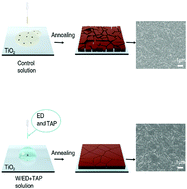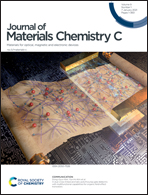Grain size control for high-performance formamidinium-based perovskite solar cells via suppressing heterogenous nucleation†
Abstract
In the past few years, hybrid organic–inorganic perovskite solar cells (PSCs) have shown great potential for solar energy conversion in photovoltaic applications, due to their high power-conversion efficiency and low-cost fabrication. A high-quality perovskite film with large grain size and low-defect density plays a crucial role in high-performance FAPbI3-based PSCs. To date, only a few research efforts have focused on investigating the role of modifiers in precursor solutions of perovskite materials in terms of modulating the nucleation rate to obtain high quality perovskite films. Herein, by introducing ethanedithiol (ED) and tetrabutyl ammonium perchlorate (TAP) into the precursor solution, homogeneous nucleation occurred preferentially and high-quality α-FAPbI3 perovskite films with grain size scales up to the micron-level (∼1.7 μm) were obtained. Obviously, with a decrease in the number of grain boundaries, the defect density of the final modified films was also reduced. The modified FAPbI3-based PSCs achieved a PCE of 20.15% and maintained about 92% of the initial efficiency in an air atmosphere.



 Please wait while we load your content...
Please wait while we load your content...